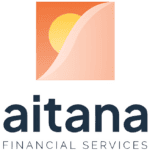Saving Investment
- Access to a wide variety of providers to be able to assist with your financial needs
- Specialist Advisers
- Here to help at whatever stage of your financial journey
Get in touch for a fee-free, no-obligation chat about how we might be able to help you.
What's On This Page?
Get In Touch
Home » Saving Investment
Investing for children
Two principles which apply to many aspects of financial planning are particularly relevant when planning for your child’s financial future:
- The longer the timescale, the more scope there is for your investments to grow
- Taking expert advice will help you get the decision right first time and avoid potential pitfalls
Making your plan
A bit of forethought will make finding the right solution a lot easier. When considering the best way to save for your children, there are three main points to consider:
Ownership and investments
Giving ownership of a significant investment to a child under the age of 18 is not usually recommended and it is advisable to retain guardianship over at least some of the money until they are over 18. Otherwise, a child could turn an investment into cash and spend it, on the very date of their 18th birthday (16th birthday in Scotland).
Choosing the investments
If you make the decision while your children are still quite young, then you have the benefit of being able to take a long-term view to maximise the potential for growth. While a long-term perspective means a broad choice of options, it also means you should review your choice of investments on a regular basis.
Tax
Tax should never be the driving force behind your investment decision. You only pay tax if you are making money – whereas, making an inappropriate investment just to save tax could end up with you losing more. However, once you have decided on the most suitable investment, it then makes sense to invest via the most tax-efficient route.
Note: it is worth bearing in mind that the three above mentioned issues can sometimes conflict. For example, your choice for ownership may not fit with the most desirable tax treatment.
Goals
Setting a goal or goals is an important part of the investment process and can help you determine how much risk you need to take. We can help you be confident in setting your goals, once set, you need to stick to these where possible. Making changes once the investment is in full ight can incur administrative and cost issues – which may result in poorer overall returns.
Allocation
Once risk factors and goals are determined, you can start to work out what type of assets you want to invest in. Getting an asset allocation arranged is vital and is considered a key stage in the investment process.
Fund choice
When it comes down to choosing investment funds, there is a vast choice and selecting funds is much more complicated than just picking the three top performers. In any event, past performance is not a reliable guide to the future.
Even within what might seem quite small, different funds can achieve results in quite different ways. For example, table-topping funds could carry the highest risk because they may be concentrated in a limited number of holdings.
Speak To an Expert
Aitana Financial Services was established in 1993, and today we cover the whole of the country, focusing on giving the best advice for your circumstances. We really pride ourselves on the quality of our advice, and it’s the reason we’ve grown through recommendations from happy clients.
Bringing it all together – the right choice of product
Choosing your funds may be the end of the investment decision process, but it is not the end of the exercise. After fund choice, you need to decide what type of product or ‘wrapper’ you need, bearing in mind tax considerations and the requirement for flexibility.
Currently, there are six main options, two of which are specifically designed for children:
Junior ISAs and ISAs
Any child under 18, living in the UK, can have a Junior ISA (JISA). The maximum investment into a JISA is £9,000 a year (2022/2023 tax year) and investment can be by a number of different people. Income and gains within a JISA are free of UK tax and not subject to parental tax rules.
Children aged 16 and 17 can also own a cash ISA. Unlike the JISA, this ISA can only hold cash deposits. The maximum investment for the 2022/2023 tax year is £20,000. Between 16 and 18, any tax liability arising on the interest paid will fall on the parents.
Both JISAs and Cash ISAs can be controlled by the child from age 16, but withdrawals are not normally allowed before age 18.
An ISA is a medium to long term investment, which aims to increase the value of the money you invest for growth or income or both. The value of your investments and any income from them can fall as well as rise. You may not get back the amount you invested.
Child Trust Funds
Child Trust Funds (CTFs) are no longer available for new applicants, having been replaced in 2011 by JISAs. However, some CTFs will still be active and the same rules apply as before. Children can get control at 16 but can’t access funds until 18.
Note: No child can hold both a JISA and a CTF. If a JISA is preferred, there is now the option to transfer the proceeds of CTF into a JISA, usually without penalty.
Investment bonds
Investment bonds are single premium policies which can be useful for the management of lump sums placed into trust. Like collective funds, they are also available from both onshore and offshore providers. The underlying investments are usually collective funds, but the overall tax treatment is different and based on life assurance tax rules.
Indeed, it is that treatment that makes them suitable for trust investment. Firstly, income accumulates within the bond itself, minimising the associated administrative and tax issues. Secondly, onshore bonds enable the deferment of certain income and capital gains liabilities. Which means that, other than withholding taxes, tax can be carefully managed both during the investment term and also over the period in which it is finally redeemed.
Personal Pensions
Personal pensions come with no minimum age restriction and contributions are limited to a maximum of £3,600 a year.
Contributions to a personal pension are made net of basic rate tax, meaning you can start to build that £3,600 a year at a net cost of £2,880, regardless of your own tax position. No further Income Tax or Capital Gains Tax will be payable on the investments held in the personal pension, until your child starts taking benefits, which currently cannot be before age 55.
National Savings & Investments
National Savings & Investments (NS&I) also offers a limited range of products suitable for children, with varying tax advantages.
The value of investments and any income from them can fall as well as rise and you may not get back the original amount invested.
HM Revenue and Customs practice and the law relating to taxation are complex and subject to individual circumstances and changes which cannot be foreseen.
The information on this website is for use of residents of the United Kingdom only. No representations are made as to whether the information is applicable or available in any other country which may have access to it.
Approved by the Openwork Partnership on 31st March 2023

